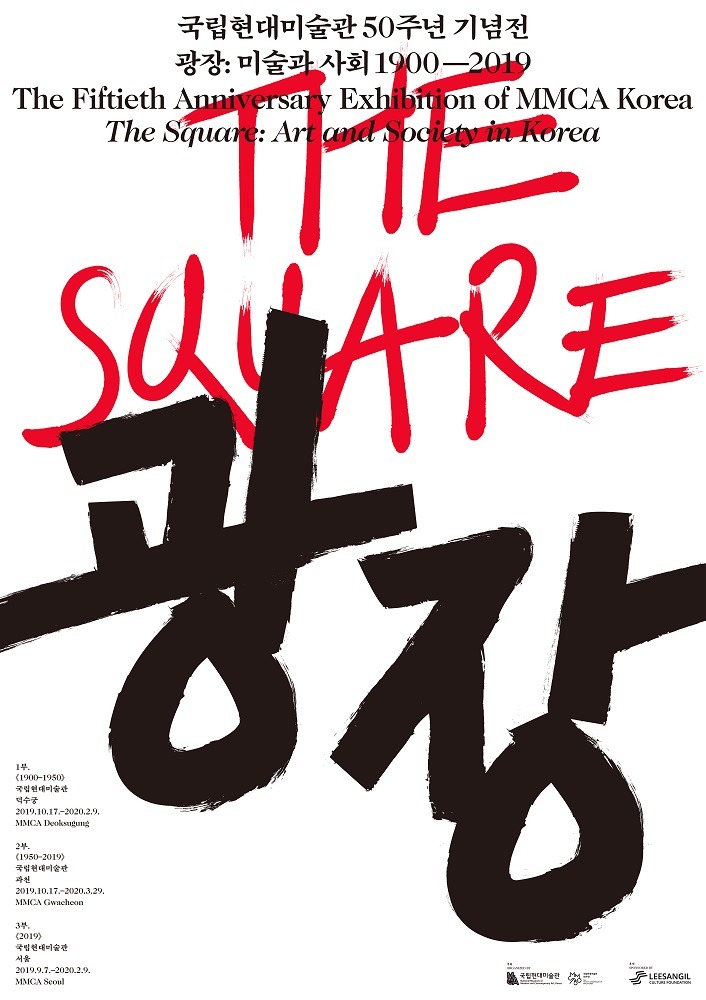
| Period| | 2019.09.07 - 2020.02.09 |
|---|---|
| Operating hours| | Tue,Wed,Thur,Fri,Sun 10:00-17:00 |
| Space| | National Museum of Modern and Contemporary Art in Gwacheon |
| Address| | 313, Gwangmyeong-ro, Gwacheon-si, Gyeonggi-do, Republic of Korea |
| Closed| | January 1st, Monday |
| Price| | 2,000won |
| Phone| | 02-2188-6000 |
| Web site| | 홈페이지 바로가기 |
| Artist| |
성능경,최춘옹,크리스티앙 볼탕스키
|
정보수정요청



|
|
Exhibition Information
《Plaza:Art and Society Part 1900-2019 195050-2019 The second part of the exhibition examines the corresponding relationship between Korean society and contemporary art on the occasion of the 50th anniversary of the establishment of the National Museum of Modern and Contemporary Art. The exhibition revolves writers and works around each other in the lives of society and individuals, and visualizes the chronology of time flow through works of art and materials. It has also diversified to cross, edit or reinterpret each other through literature, plays, commission works, etc. At the time, the relationship between "The Square-Private-Sea" and "Social-Personal-ideal," which is written by Choi In-hoon’s novel "The Square," was borrowed as a key concept that mirrored artists’ efforts to criticize power and seek out ideal through new forms in "The Plaza" of Korean society. In this regard, the space of the art museum consists of two squares, the first one being held in the exhibition hall and the central hall, showing contemporary Korean art with the trend of society, starting with the Korean War in 1950. Each regiment was then established by referring to a total of five themes borrowed from the novel "The Plaza." It tried to revive our lives in a richer way at that time by showcasing major works and old ceramics, stamps, posters and architectural models. Also, major events of each time are grouped into special sections to help understand. The second space is the actual implementation of "piazza" in a circular exhibition room. In Korean society, the square is where nameless people made noble sacrifices for social progress. The exhibition hall serves as a space for memories and condolences for them. At this time, the works of artists will be a form of tribute, which will be completed with the participation of visitors. It showed the organic relationship between 'the square' and 'the secret room' and tried to bring together tears of social passion and frustration from those who sailed to 'the sea.' Thus, there is no portrait of heroes appearing every time they talk about history chronically. However, the time of summoning artists with their sensibilities and the desire to revive the people of today.
